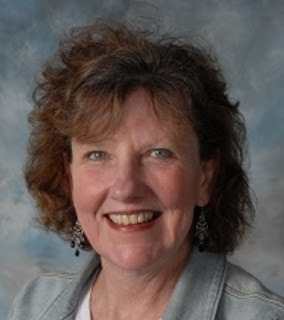In this interview, Jaime Donally talks to Alexander “The Engineer” Lim,
host of AuthorStory by alvinwriter.com about her book, Learning Transported: Augmented, Virtual and Mixed Realityfor All Classrooms.
“I want teachers to know that these are the tools that we have for
today, not someday.” ~Jaime Donally
One of the aspects that educators need to learn and grow in is the use of technology in the classroom which, Jaime notes, is more for the student than for anyone else. Jaime herself has been involved in instructional technology for several years, even before it became popular, working as a resource person and trainer with educators who implement and become familiar with how to use technology in teaching.
Jaime never gave much thought to writing a book, but she had a lot of
material to work with. Learning Transported stemmed from the
people she worked with asking for something “in black and white” which they
could refer to after she had met with them. A representative from the International Society for Technology in Education (ISTE)
then spoke with her about the possibility of writing a book on technology, and
while Jaime originally thought that she would be supporting a writer who would
do it, it dawned on her that the ISTE representative had her in mind as the
book’s author. When asked if she would write the book, Jaime said, “Yes,” and
the book sprang from there. Learning Transported covers aspects of
technology “beyond the wow,” covering the immersive tools available at present.
Being a practical person while doing things that aren’t the norm is part of
Jaime’s personality, and this shows in the book, as it isn’t a “standard” book
but also includes things to maintain a reader’s interest, complemented by
lesson plans she designed herself and other tools to engage the reader.
ISTE is, according to Jaime, an international organization that focuses
on integrating technology into education, and it conducts a yearly conference
in the US. It has released standards for interactive technology, and the
standards related to education revolve around enabling students to own their
own learning and their creativity, thereby empowering them from just being
students spoon-fed with information.
Jaime discusses the newly envisioned 2016-2017 ISTE standards in Learning Transported as well as various
issues, such as why the technology is necessary and the importance of having
such resources. Her book also reveals other aspects of technology which aren’t
common knowledge to the public, giving information on the true depth and
breadth of the technologies available. Jaime points out that such games as the
popular video game Pokemon Go, which came out in 2016 and enabled participants
to travel around the real world in order to capture virtual creatures, have
brought awareness to such things as augmented reality to the public, and that
its potential is far greater than what is commonly known.
Jaime Donally defines three kinds of immersive technology as follows:
- Augmented reality is the kind
highlighted by the aforementioned Pokemon Go game, where a digital world
is superimposed on the real world through a technological device.
- Virtual reality is a purely digital
reality which allows the participant to look around in a world or reality
other than that of the real world, moving, seeing and experiencing that
world in the same way one would the real world.
- Mixed reality is a takeoff from
augmented reality, where the digital images can move in the real world as
if it’s an actual object. The process is based on the computer’s
recognition of both the image as an object that influences the lighting in
the place where it is superimposed.
Jaime remarks that learning is done in three dimensions, and learning in
augmented, virtual and mixed realities enables them to learn and create more
naturally. She notes that a lot of money is going into developing interactive
technologies and that, some years back, it wasn’t a topic of discussion amongst
educators, unlike the way it is at present. Jaime notes that, at present, immersive
technology is still not mature, and that “pockets” of interactive technologies
are what exist at the present, rather than a widespread or mainstream use.
Companies presently use interactive technology far more than schools do, and
Jaime admits that education does lag where technology use is concerned.
Jaime notes that the term “disruptive technology” is what’s most often
associated with interactive technology, and while she acknowledges the fear
that educators have when embracing a new system, she also remarks that
educators need to keep the students’ interests in mind. Interactive technology
should, according to Jaime, match up with the skills and ways students would
ultimately need to have and learn to succeed in life. Jaime notes that
interactive technology will enable students to “own” their learning and unleash
the students’ creative instincts, which would turn educators from being mere
information feeders to facilitators who guide students in exploring their
learning and creativity, giving them the freedom to become creators and
producers of their own content. This is reflective of what is embodied by the
new ISTE Standards which is very clear in the preamble:
“The 2016 ISTE Standards for Students emphasize the skills
and qualities we want for students, enabling them to engage and thrive in a
connected, digital world… The reward, however, will be educators who skillfully
mentor and inspire students to amplify learning with technology and challenge
them to be agents of their own learning.”
Purchase from Amazon: Learning Transported: Augmented, Virtual and Mixed Realityfor All Classrooms by Jaime Donally








